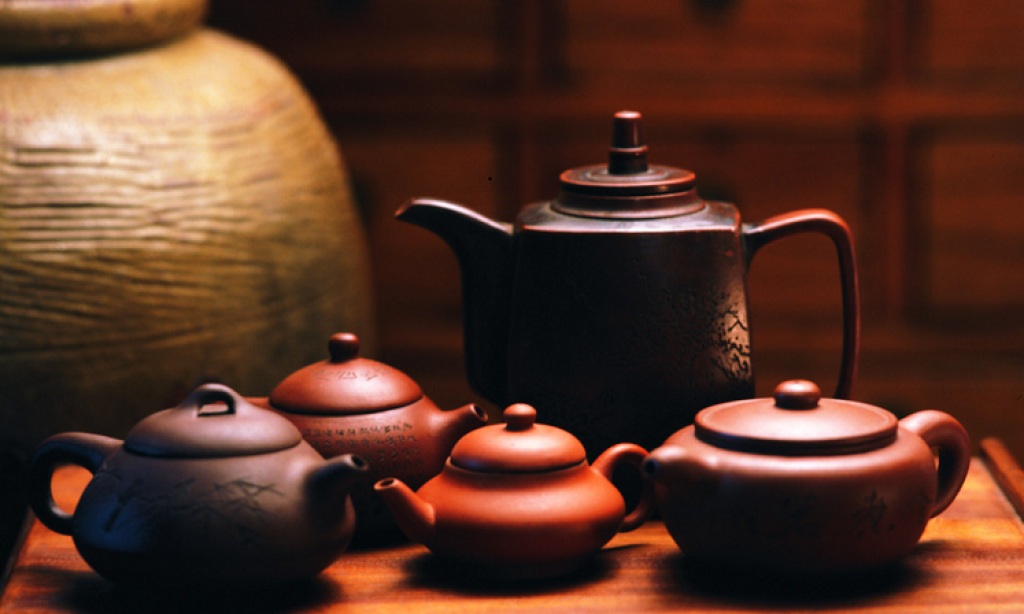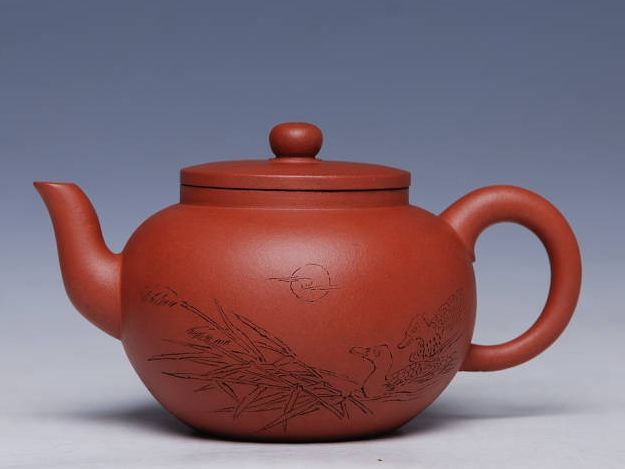KettlePots.com: Some wise persons say that if you use a Yixing teapot for many years, you can brew tea just by pouring boiling water into the empty kettle pot.
This is just one of the many wonderful properties of these poetic little teapots. For hundreds of years, aficionados of the many varieties of tea found in China have extolled Yixing (pronounced yeeshing) teapots as superior to all other types for brewing it. The special zisha clay (containing iron, quartz and mica, and found only in Yixing) from which they are made tends to absorb the delicate flavors of the tea and the tea pot becomes more seasoned with each use.
Yixing-ware teapots have an interesting history that dates back to the Sung Dynasty (960 – 1279) when purple clay was first mined around Lake Taihu in China. Their unpretentious earthy tones and subtle beauty flourished and matured in the Ming and Qing Dynasties (1573 – 1911). Along with the earliest tea shipments to Europe came distinctive red earthenware teapots, initiating a tea drinking tradition that continues today. A traditional favorite of local scholars and artists, the pots are made from the signature clay of Yixing, an area situated 120 miles northwest of Shanghai in Jiangsu province. In the seventeenth, eighteenth, and nineteenth centuries, scholars variously praised, made, inscribed and collected this renowned classic Chinese art form. Now as then, each piece is shaped by hand on a potter’s wheel and left unglazed, both because it makes better tea and because doing so allows the color of the clay to shine through.
Highly prized for its porous nature, which is excellent at absorbing the flavor of tea, Yixing clay occurs naturally in three characteristic colors: light buff, cinnabar red and purplish brown. Other colors are created by mixing these three or adding mineral pigments; for example, the dusty black color is obtained by mixing in cobalt oxide and the blue color is made by mixing in magnesium oxide. A principal factor in determining the depth of the color is the concentration of iron in the clay. All the characteristic Yixing colors are called zisha, but the most celebrated of all Yixing wares is its zishayao, or purple sandware, in which a relatively high concentration of iron produces a deep purplish brown color, sometimes called “pear-skin.” Western tastes tend to run to a wider range of colors other than the prized zishayao.
Traditionally, Yixing pots were small so that each person might have their own. The tiny cups were proportionate to the pots, so that drinking 100 miniature cups a day might not be considered excessive.
One of the special attributes of a zisha teapot is its ability to retain heat. Minute pores produced in the clay during firing retain both heat and flavor, and the low shrinkage rate of Yixing clay allows the skillful potter to make a closely-fitting lid that inhibits oxidation thus heightening the tea’s flavor.

The Yixing teapot is free of lead, arsenic, cadmium, and other toxic materials. Because of the unique properties of the Yixing clays, Yixing ware is unlike other unglazed earthenware teapots. The Yixing teapot has a fine and solid texture, a four percent water absorption rate, a very low thermal conductivity, and a double air hole design which enhances the pot’s brewing properties. The principal standards for evaluating a teapot’s brewing quality are the color of the tea soup produced and the level of tea phenol, caffeine, and aminophylline. The performance of the Yixing teapot is far superior to that of the standard teapot with respect to all four of these criteria. Hence, not only are Yixing teapots beautiful and unique works of art, but they are excellent brewing vessels.
Source: holymtn.com. Credits: Springteaware






